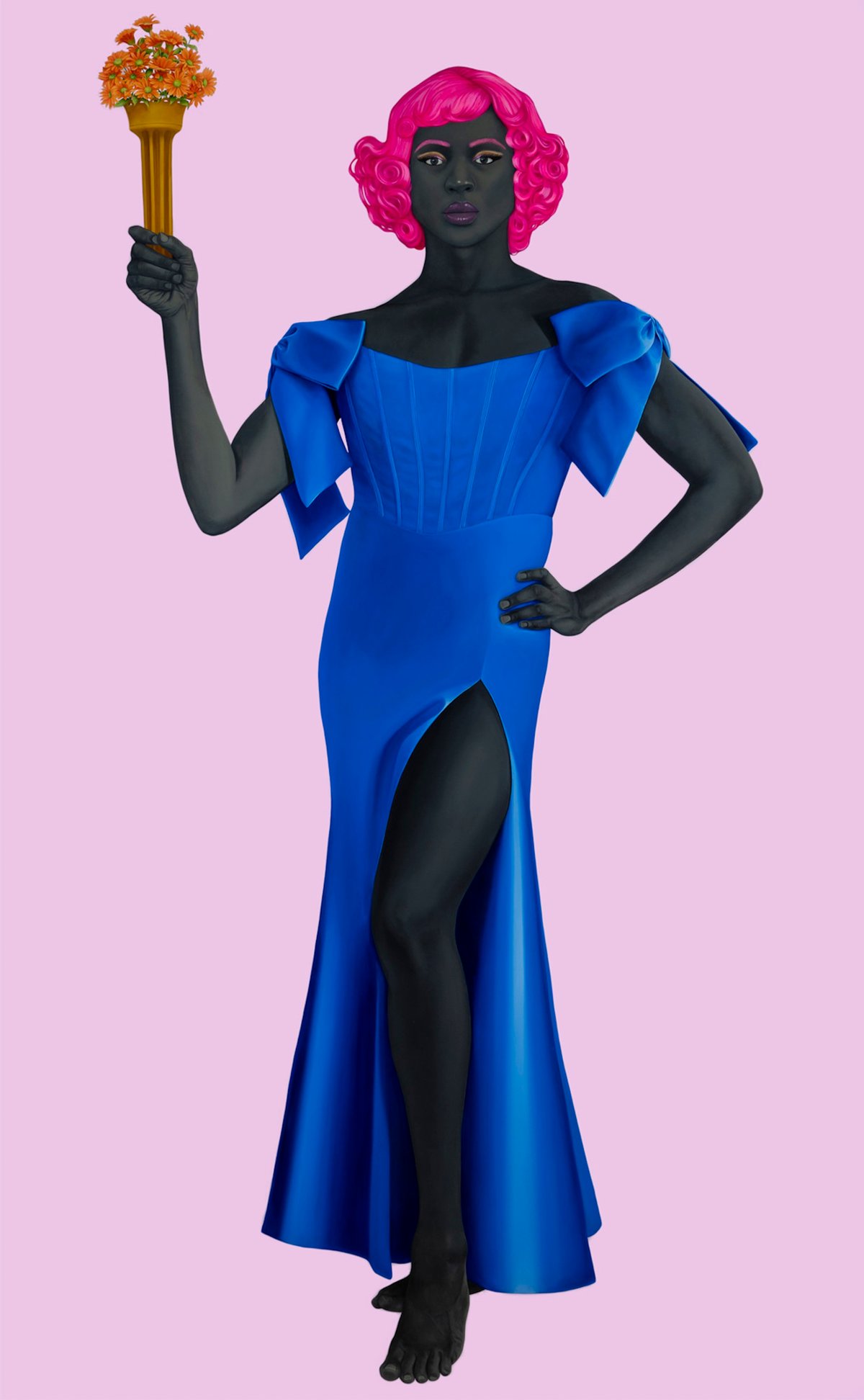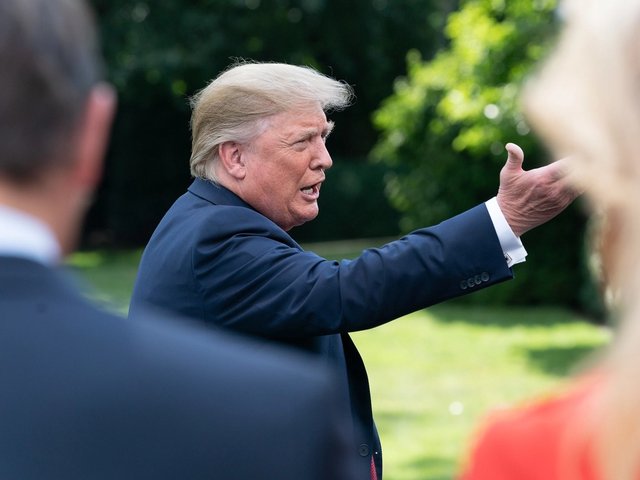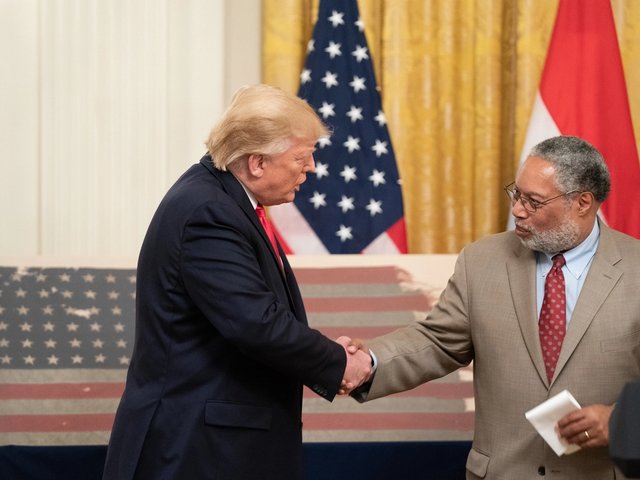The artist Amy Sherald has cancelled the final leg of her touring solo exhibition American Sublime, due to open at the National Portrait Gallery (NPG) in Washington, DC, in September, after representatives of the museum allegedly suggested removing a portrait of a non-binary transgender person posing as the Statue of Liberty to avoid falling afoul of US President Donald Trump’s targeting of transgender communities.
“This painting exists to hold space for someone whose humanity has been politicised and discarded,” Sherald says in a statement. “I cannot in good conscience comply with a culture of censorship, especially when it targets vulnerable communities.”
The painting is one of many striking and powerful portraits in Sherald’s show, which explore ideals of American culture like family, freedom and economic prosperity. It is currently on view at the Whitney Museum of American Art in New York (until 10 August) after opening at the San Francisco Museum of Modern Art last year. All of Sherald’s sitters are Black and they are portrayed with equal measures of vulnerability and strength.
The sitter for Trans Forming Liberty (2024), Arewà Basit, is a non-binary trans-femme artist, actor, singer and songwriter. In an audio description about the work, Basit says Sherald’s image of Lady Liberty is a woman “who is empowered, empowering and represents the fullness of what liberty and justice could give and what it can mean”. Basit adds that when looking at the portrait, “I truly see myself, which is remarkable”, feeling a sense of “full pride and acceptance of oneself”.
“And there are some moments where I think the world tries to tell us that being proud is a negative thing,” Basit continues. “Whether that be because of legislation, or the administration or other social systems that will try to tell me that I shouldn’t be proud of who I am, I can always look back to this image and be reminded that the lack of pride will never serve me like the pride serves me.”
In the days leading up to the exhibition’s move to the NPG, where Sherald unveiled her celebrated portrait of former First Lady Michelle Obama in 2018, the artist says she was informed of “internal concerns” about Trans Forming Liberty, which “led to discussions about removing the work from the exhibition”, according to her statement. “While no single person is to blame, it’s clear that institutional fear shaped by a broader climate of political hostility toward trans lives played a role.”
The NPG is part of the Smithsonian Institution, which has already been targeted by the Trump administration for allegedly presenting “improper ideology”, specifically an exhibition examining the role of race in American sculpture and a display honouring transgender athletes. Its director, Kim Sajet, also recently resigned after the president accused her of being a “highly partisan person” and “a strong supporter of [diversity, equity and inclusion programmes], which is totally inappropriate for her position”.
As the museum discussed Trans Forming Liberty, Sherald says the Smithsonian’s secretary, Lonnie G. Bunch III, suggested replacing it with a video about visitors’ reactions to the portrait and transgender issues, which led the artist to cancel the show. “The video would have opened up for debate the value of trans visibility and I was opposed to that being a part of the American Sublime narrative,” she told The New York Times, which first reported the news.
So on Wednesday (23 July), Sherald sent a letter to Bunch, according to the Times, telling him: “I entered into this collaboration in good faith, believing that the institution shared a commitment to presenting work that reflects the full, complex truth of American life. Unfortunately, it has become clear that the conditions no longer support the integrity of the work as conceived.’’
In a statement, a spokeswoman for the Smithsonian said the institution has a long history with Sherald, and continues “to be deeply appreciative of her and the integrity of her work. While we understand Amy’s decision to withdraw her show from the National Portrait Gallery, we are disappointed that Smithsonian audiences will not have an opportunity to experience American Sublime.” The statement continued: “By presenting and contextualising art, the Smithsonian aims to inspire, challenge and impact audiences in meaningful and thoughtful ways. Unfortunately, we could not come to an agreement with the artist. We remain appreciative and inspired by Ms Sherald, her artwork and commitment to portraiture.”
“At a time when transgender people are being legislated against silenced, and endangered across our nation, silence is not an option,” Sherald says in her statement. “I stand by my work. I stand by my sitters. I stand by the truth that all people deserve to be seen—not only in life, but in art.”
The Whitney Museum curator Rujeko Hockley, who organised the exhibition's presentation there, said in a statement: "It has been my absolute honour and pleasure to work with Amy to present Amy Sherald: American Sublime at the Whitney and to share her important work with our audiences. Amy’s portraiture captures the individuality of her subjects with extraordinary sensitivity, while evoking a profound sense of our shared humanity. I, and the Whitney, support Amy and her work completely."






